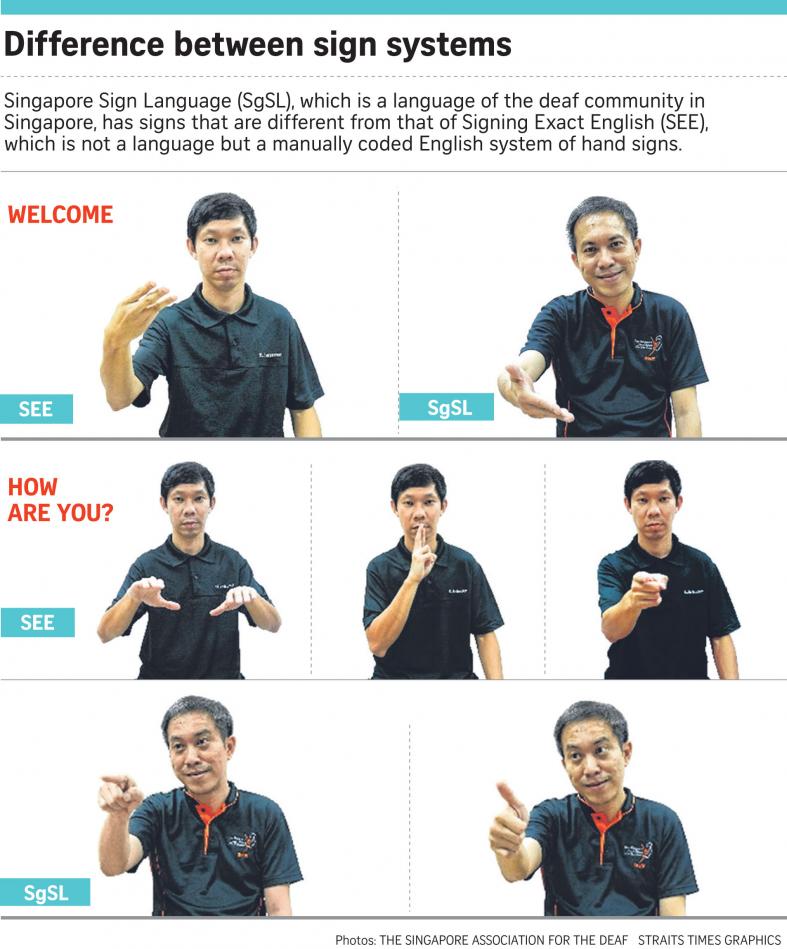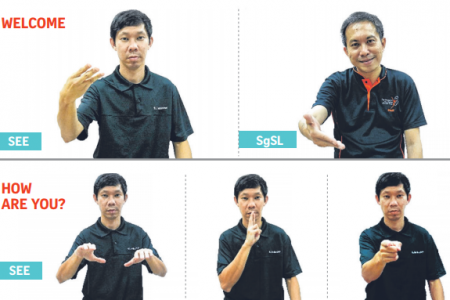Sign instructor on TV programme 'inaccurate'
Association for the Deaf concerned with PA-endorsed coach's course on Hello Singapore
The Singapore Association for the Deaf said that it is troubled by a Channel 8 Chinese current affairs programme, Hello Singapore, which showed a trainer from a People's Association (PA) SkillsFuture course teaching sign language.
The association, which represents individuals who are deaf or hard of hearing, said that the signs were "inaccurate" and that the trainer is not on the association's list of sign language instructors.
Moreover, the trainer was demonstrating Signing Exact English (SEE) and not Singapore Sign Language (SgSL), which the deaf community in Singapore uses.
The association said that SEE is not a sign language. In the United States, the deaf community uses American Sign Language (ASL).
And on its website, SEE makes it clear it is not a replacement for ASL.
While ASL is about facilitating communication, SEE is about developing an understanding of the English language that allows users "to effectively read and write English, despite not being able to hear the spoken words".
In an open letter to the PA on the Singapore Association for the Deaf's Facebook page, the association said: "(SEE is) a sign system which, as its name implies, follows English exactly in terms of word order and grammar.
"It visually represents spoken language on the hands and can be used simultaneously with voiced English."

In response to queries from The Straits Times, the association said that SgSL has its own grammar and linguistic structure which is different from those of spoken and written languages.
In contrast, SEE is an expanded system with prepositions, pronouns, affixes, tenses and finger-spelt words to visually represent the English language.
Mr Alvan Yap, 40, a freelance writer who is deaf, explained that SEE is not actually used by deaf people among themselves in daily conversation.
"What gets our goat is seeing people who are not deaf and who are not well versed in sign language (as it is used in real life) going on TV to 'teach' sign language to the public," said Mr Yap.
PA responded on the association's Facebook page saying it requires course instructors to show proof of their qualification and their ability to conduct courses.
"Nevertheless, we have noted the feedback and concur that there could be more alignment with 'Singapore Sign Language' curriculum. PA will evaluate and look forward to the opportunity to work with your organisation to strengthen this alignment, in building a more inclusive community together," it added.
Get The New Paper on your phone with the free TNP app. Download from the Apple App Store or Google Play Store now



